Most patients 'right to go to A&E'
- Published
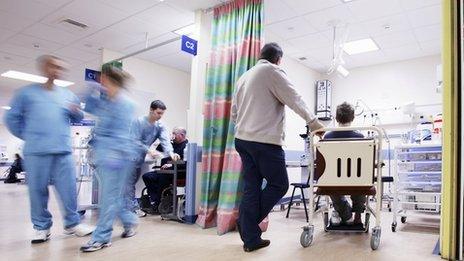
The review looked at a 24-hour period in 12 A&E units
To A&E or not to A&E? The College of Emergency Medicine's director and NHS England's director discuss
Efforts to redirect patients away from busy A&E departments will not work, doctors have said - as a new study shows most need to be seen there.
The College of Emergency Medicine review of more than 3,000 patients found only 15% could have been treated in the community.
Last year NHS England suggested 25% could - and used that to justify a major shake-up of A&E units.
The difference amounts to 1.4m patients, the college said.
The college is not opposed to NHS England's proposed creation of a two-tier system involving major and minor units.
But it said the expectation that large numbers of visits to A&E could be saved was likely to be wrong, and it was important to take other steps to relieve pressures.
'Urgent need'
One of these includes locating GPs in or alongside A&E units to filter out the less urgent cases - something which is already happening in a number of hospitals.
The review, carried out by consultancy Candesic, looked at what was happening in 12 A&E units over a 24-hour period in March.
It found 85% of patients needed to be seen in A&E - although 22% could have been dealt with by a GP on site if there had been one.
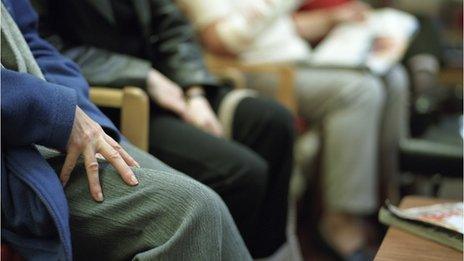
Doctors and politicians are arguing over what is behind longer A&E waits
College president Dr Clifford Mann said: "The fact that only 15% of attendees at emergency departments could be safely redirected to a primary care clinician without the need for emergency department assessment is a statistic that must be heeded by those who wish to reconfigure services."
Katherine Murphy, of the Patients Association, said: "For many years patients have been wrongly criticised for abusing A&E departments and wasting NHS resources, but these latest figures show that the majority of these patients are genuinely ill and require urgent medical treatment.
"We cannot ignore these figures. There is an urgent need to look at the provision of NHS care in a joined-up way and ensure that the patient comes first in every decision made."
But a spokeswoman for NHS England said: "There have been several attempts to quantify the percentage of A&E attendances that could be readily managed elsewhere, with estimates ranging between 10 and 45%.
"Variation in these figures is due to the A&E departments studied, the types of patients attending, locally available services and the subjective judgement of those involved in giving the clinical opinion. This new figure from the College of Emergency Medicine therefore falls within the expected range."
She said NHS England recognised the value of placing GPs alongside A&E units, but said other measures such as "better self-care advice, an enhanced NHS 111 and ambulance services capable of offering skilled treatment at the scene" were also important.
- Published13 November 2013
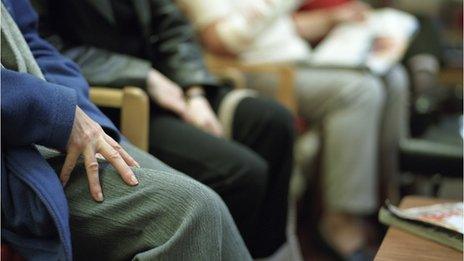
- Published22 May 2014
- Published8 October 2013
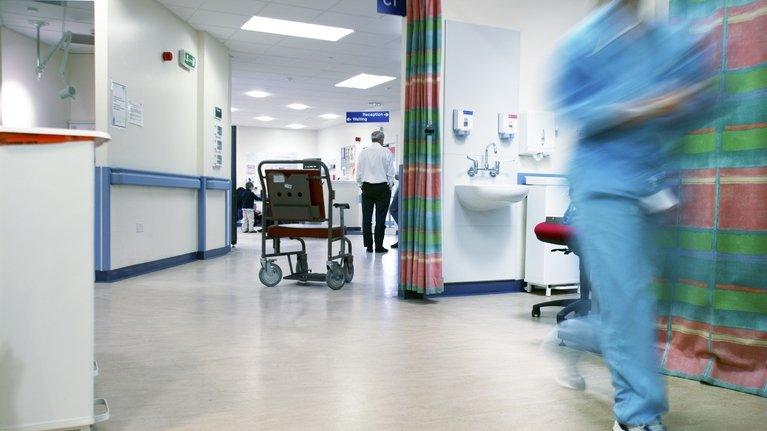
- Published8 August 2013
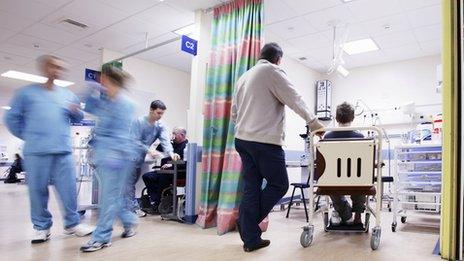
- Published9 August 2013